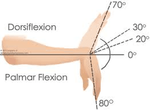Carolina Golfer
Well-known member
- Joined
- May 11, 2017
- Messages
- 2,603
- Reaction score
- 1,322
- Handicap
- 36
What are good ways of a getting rid of a cupped left wrist at the top for a rightie especially for the Driver?
Follow along with the video below to see how to install our site as a web app on your home screen.

Note: This feature currently requires accessing the site using the built-in Safari browser.
Try this but not tooooo much
^^^^^^^This^^^^^^Flatten it at the top/in transition
Thanks, Desmond. The downswing is another component for sure. Back to getting a flat wrist at the top. Does one add more body turn or something else rather than just doing it?
Sometimes I have trouble transitioning up top from a flat wrist to a subtly bowed wrist as I try to shallow the club. One of my "Band-Aid" swings is to adopt a cupped wrist at the top - from there, I can make an exaggerated shallowing move which is sometimes easier than making a subtle shallowing move. I also like to cup my wrist up top to hit solid release-fades.
As far as what "feels" good to me, a cupped wrist feels awesome for some reason.
I don't know what his swing looks like or what his ball-striking looks like, but it's possible that cupped wrists aren't the problem. Many good players have had cupped wrists at the top. Just giving him my .02-cents on the subjectWhen I want a fade, I strike the outside of the ball first - the old "out to in."Why would OP want a cupped wrist if he is trying to get rid of it?

I don't know what his swing looks like or what his ball-striking looks like, but it's possible that cupped wrists aren't the problem. Many good players have had cupped wrists at the top. Just giving him my .02-cents on the subject
When I feel like I am cupping my wrist at the top, I use the tip that was mentioned in another post of imagining being a waiter and holding a serving tray full of plates with your right hand at the top of your swing. If you do that, you can't cup the left wrist, you will bow it, if anything.



Try this but not tooooo much